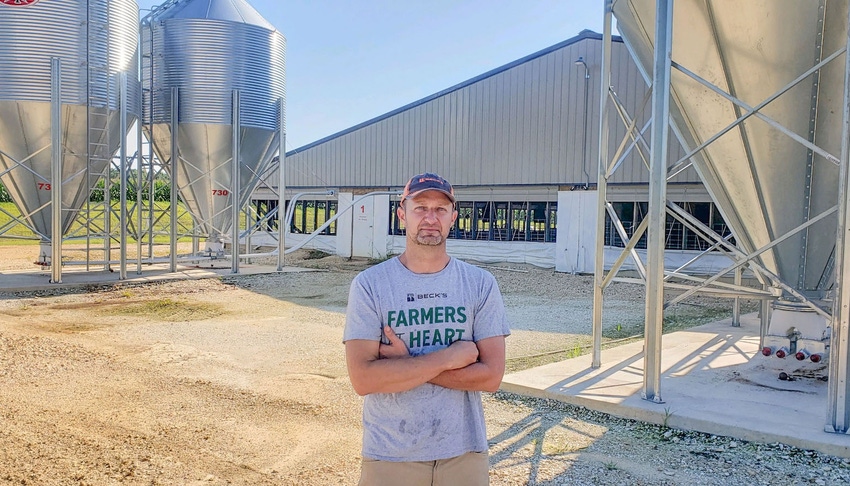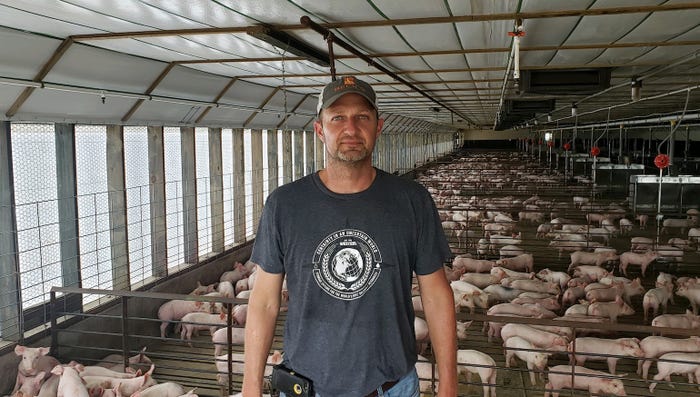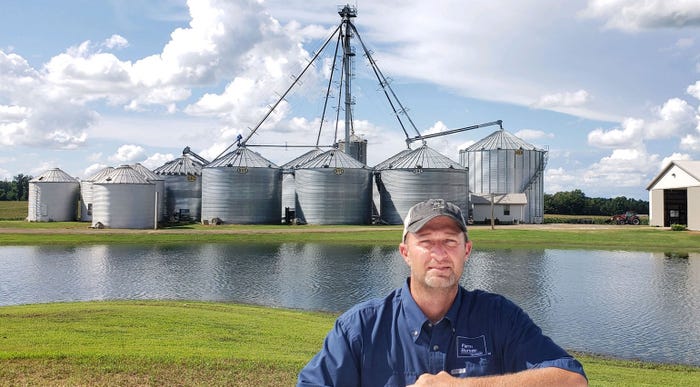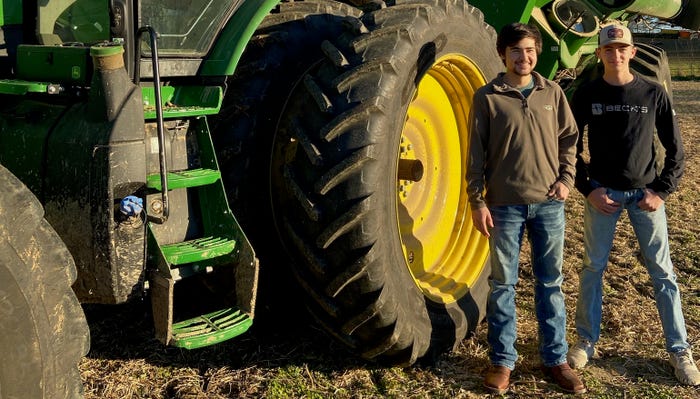
As he thinks back on the past year, Ben Moore says he could have never imagined the many twists and turns 2020 had in store. As planting season began, commodity prices were so depressed, that he found it difficult to pencil out a break-even point. COVID-19 lockdowns meant he and his wife, Jennifer, were saddled with home-schooling their three children, while trying to get 3,500 acres of crops in the ground. And it wouldn’t stop raining.
Things did not look good.
But despite the challenges early on, Moore says 2020 turned into one of the best crop years in his nearly two decades of farming.
“I’ve always wanted to have a year where I made a really good crop and got a really good price for it, and 2020 is the first year that’s ever happened,” Moore said. “We saw growing conditions and price rallies that we couldn’t have forecasted at the start of the season. We’re very fortunate the Good Lord blessed us with a great crop and great prices.”
2020 Totally Different Year
Moore farms in northwest Tennessee with his father, Kenneth. In addition to grain crops, they raise beef cattle and run a 5,000 head wean-to-finish hog facility. Even before the COVID-19 pandemic rocked the world, 2020 was going to be different on Moore’s farm. As he planned his crop mix last December, he decided to go with 18 different corn varieties on about 1,700 acres.
“It’s hard to stay up on the new hybrid technology because it seems like it changes every year,” Moore said. “I’ve actually never planted that many varieties in one year before, and of the 18, there were only three or four that I had a little history with. The rest were totally new, and it actually turned out really well.”

Moore said he averaged more than 200 bushels per acre on many farms. He did a lot of side-by-side comparisons of the varieties, aided by a new addition to his operation, Climate FieldView, a digital platform for on-farm data analysis.
“Climate allowed us to do comparisons across the whole farm versus the way I used to do it where I might shell eight rows down and eight rows back. If I was only doing one comparison of Variety A versus Variety B, I might be in the wrong spot for one of those varieties, but with this software you can see the whole farm, and it’s much more accurate.”
Moore plans to spend some time combing through the data provided by Climate to see which varieties he wants to place and where to place them on his farm.
“It’s going to be a great tool going into 2021 because I have a lot of data that I can look over and pick the right varieties.”

Early Soybeans
Moore also made a change to his planting schedule this year, starting with soybeans instead of corn.
“We really like to have even emergence on our corn when we plant it, and with the soil temperatures the way they were, we just didn’t think we could achieve that,” Moore said.
“So, we planted about 600 acres of beans the second week of April. Then we started planting corn the third week. And then May was a wash out.”
While the cool, wet spring forced Moore to abandon some corn acres, growing conditions later in the season proved excellent, especially for those earlier planted soybeans.
“The bean crop was the best bean crop we’ve ever had.”
Training Next Generation
While Moore, like many parents, spent the spring helping his children keep up with their schoolwork, he also saw the extended break as an opportunity for hands-on training of his teenage son and nephew. It’s a decision that he said benefitted the operation when harvest rolled around.

“They were able to help us a lot on the farm,” said Moore. “My son, Miller, has worked with us and operated equipment for some time, but my nephew, Reed Rushing, had not driven a tractor for us much before, and he was able to get a lot of in-field experience. My son runs an auger buggy for us in the fall, and thanks to the training this spring, my nephew was able to run the other auger buggy. They both did a great job, and that freed up the other guys on our crew to be on the trucks.
“We are fortunate to have a very skilled and efficient farm crew that does excellent work. Adding more experience to our team this harvest made it run that much smoother. In that way, the lockdown was beneficial to us.”
Never Give Up
2020 was a year of the unknown and the unexpected, but out of the uncertainty came an important lesson on tenacity.
“If 2020 taught me anything it was to never give up,” Moore said. “When we started planting the crop prices were terrible and we weren’t sure we could even break even. It’s hard to be motivated to go out and plant a crop that you feel like you won’t make any money on. But farmers are resilient.”
Of course, prices rallied at an atypical time of year, a nice surprise that Moore sums up as the “beauty of farming.”
“Every day is different, and it was a different harvest. But it was much more pleasant knowing we were harvesting a crop that we could sell.”
There is still much uncertainty in our world as 2020 draws to a close, but it is with much more optimism that Moore will prepare for the 2021 crop season.
“It’s encouraging to be able to pencil in profits and we’re excited about 2021.”
About the Author(s)
You May Also Like






